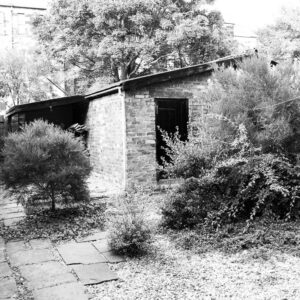


update 1: home working
What other people get up to in their garden sheds is nobody’s business, but subscribers to this blog may be interested to learn that mine is currently being deployed as a multi-media factory, if a MacPro, a MIDI keyboard and a bunch of software qualify as the means of production. Since my final trip in May I’ve spent too much time within these walls, piecing together 66 short films for The Devil’s Plantation website due to launch in October. This is no small task, with over 30 hours of footage to edit and with every piece of sound recreated from scratch.
Two years down the line, it’s hard to attach a label to this piece of work, since there’s virtually no precedent. Part travelogue, part miscellany of curious facts and part narrative, at root the website is an exploration into the nature of storytelling in an age when the online experience, as with so much popular culture, has been distilled into bite-size episodes; fodder for attention-deficit grazers. So, I thought, better to make a virtue of it. Coming from a commercial film and TV background, I’ve had to adopt a new mindset while drawing on my experience as a storyteller working with moving image.
At the turn of the century, almost a decade ago, I was among the first UK filmmakers to embrace digital formats as a way of making films. The result was a feature-length film, One Life Stand. Back then I was thrilled by the creative freedom this offered, but not in the prosaic sense of not having to raise millions or jump technical hurdles. Rather, the revelation came from knowing that finally it was possible to own the whole process, much like writing a novel. These days anyone can take a few basic tools – even a mobile phone – and become the author, as opposed to the auteur, of one’s work. The fact that so few people do only serves to prove that technology alone can’t make artists of the masses.
But still the question gnaws. Is it art? The other day I heard a radio programme about a controversial study published in 1973 by clinical psychologist David Rosenhan, On Being Sane in Insane Places, and how he and seven colleagues and students volunteered themselves as would-be patients. Arriving at psychiatric hospitals, each presented with one clear symptom – hearing a voice in their head. Each was diagnosed as having psychotic tendencies and consequentially drugged, locked up and left to rot in these institutions until Rosenhan’s study exposed the truth of his own profession. Nobody thanked him for it.
Here the parallel is easily drawn. Perception – and its accomplice, context – being everything, what passes for art is what we’re told is art and crucially, what we’re sold as art. Ergo if I tell you I’m insane and if you have no other reference then your only, logical conclusion must be that I’m telling you the truth. If I swap the word insane for creative, say, and declare that the expression of my creativity is art, then you should assume I’m an artist. For this sleight-of-hand to succeed, it’s not what I think but what you think that counts. And to me, this desire of ours to believe in what cannot be easily proven underpins the fundamental nature of storytelling. And that’s what this project is really about.
Visibility being the name of the art game, sadly it seems the story of a piece of work shares rank with the work itself. Or in the case of the current project by sculptor, Antony Gormley, trumps the work in question. But does visibility make an artist’s work any better or does the ear of the beholder supercede the eye? During the course of making The Devil’s Plantation I’ve been asked to define who the work is aimed at, what benefit it will bring and what, if any, outcomes are likely to derive from it. Without being flippant, now I know why most of the Old Masters died broke. Did Vermeer ever stop to consider how he could develop his audience and increase the accessibility of his output? Did Titian ever assess the social and cultural impact of his oeuvre? So what if they depended on patronage – at least their paymasters were shelling out of their own pockets – and taking risks on the talent. It’s the absence of risk in contemporary creative ventures we ought to worry about, along with the dissembling and lack of discernment shown by the arbiters of taste. That, and the curse of PR.
Yet even to raise the issue of the terms and conditions attached to state largesse, to plant a question mark over the mechanics of accountability in arts administration circles, as David Rosenhan discovered, is to court controversy, derision and exclusion. Truth is, I’m very grateful to have had the chance to follow my instincts and produce something I hope others will look at and, with any luck, find visually beautiful and emotionally engaging. As my wise husband put it – your project’s not about popular, it’s about repute, so stop fretting.